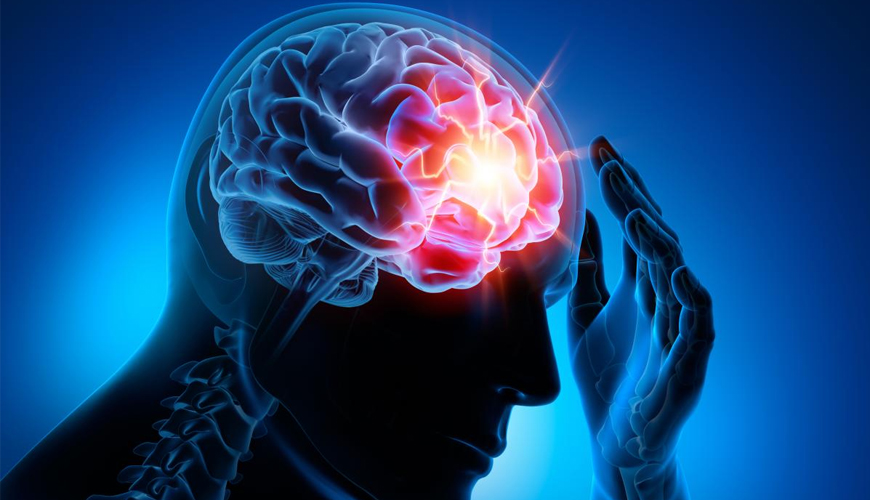Epilepsy treatment
What Is the Emergency Situation for an Epileptic Patient?
For an epileptic patient and his caregivers, it is crucial to know when shall he consider his case as an emergency one. Also, it is necessary to know the emergency signs for an epileptic patient, because you might be the only witness in these life or death symptoms.
In general, the patient with epilepsy should see the doctor if he has any new symptoms or any side effects of medications.
However, there are some epileptic cases need immediate medical help such as:
- The extended seizure lasts more than five minutes or a series of seizures without full recovery between them.
- The patient can not take his breath after the seizure episode.
- The patient stays unconscious by the end of the seizure.
- The patient’s temperature remains above the normal range.
- The patient suffers from heat exhaustion.
- The patient is an epileptic, pregnant woman.
- Patients with heart disease.
- The patient has diabetes.
- The patient injured himself.

Diagnosis of Epilepsy

An accurate diagnosis is key to epilepsy treatment. Also, the treatment depends on the type of seizure.
At first, the doctor will ask the patient about the symptoms he has and about his medical history.
Then the doctor may order several tests to diagnose epilepsy such as:
-
Neurological Exam:
The doctor tests the patient’s behavior, motor abilities, mental function, and other areas. This exam helps the doctor to diagnose the condition and determine the type of epilepsy.
-
Blood Tests:
To check for signs of infections, genetic conditions, or other conditions that may cause seizures.
-
Electroencephalogram (EEG):
It is the most common test used to diagnose epilepsy. In this test, electrodes attached to the patient’s scalp to record the electrical activity of the patient’s brain. If a patient has epilepsy, the test will show an abnormal pattern of brain wave, even if the patient is not having a seizure at this moment.
-
High-Density EEG:
In this test, electrodes are spaced more closely than conventional EEG about a half a centimeter apart. The doctor uses this test to determine which areas of the patient’s brain are affected by seizures.
-
Computerized Tomography (CT) Scan:
CT scans can reveal abnormalities in the patient’s brain, such as tumors, bleeding, and cysts. These abnormalities may be the cause of seizures.
-
Magnetic Resonance Imaging (MRI):
An MRI also can reveal abnormalities in the patient’s brain, which may be the cause of seizures.
-
Positron Emission Tomography (PET):
Doctors used PET scans to detect abnormalities in the patient’s brain. This test is carried out by injecting a small amount of low-dose radioactive material into a vein, to help visualize active areas of the brain and detect abnormalities.
-
Single-Photon Emission Computerized Tomography:
Doctors use this test when MRI and EEG do not determine the location of seizure originating in the brain. This test uses a small amount of low-dose radioactive material to be injected into a vein to create a detailed, 3-D map of the blood flow activity in the patient’s brain during seizures.
Are There Any Tests for Mental Assessment?

Yes, there are. These tests are called Neuropsychological tests.
The doctor uses these tests to assess the patient’s thinking, memory, and speech skills. The results of these tests can help doctors to determine which areas of the patient’s brain are affected.
Also, Doctors may use a combination of analysis techniques to determine where seizures start in the brain as:
-
Statistical Parametric Mapping (SPM):
This approach compares areas of the brain; which have increased metabolism during seizures to healthy brains. This method can help doctors to determine where seizures begin.
-
Curry Analysis:
Doctors use this method to determine where seizures are occurring. This test is carried out by taking EEG data and projects it onto an MRI of the brain.
All these methods are used in the diagnosis of epilepsy and in determining the location in the brain. Through which the seizures are originating. After diagnosis, we finished the first step, and now we can move to the next run.
Epilepsy treatment
Is There a Treatment for Epilepsy? What Are They Called?

Medication is the first choice in the treatment of epilepsy. Doctors will never suggest other types of therapy unless the remedy failed to control the patient’s seizures. Medications used to treat epilepsy are called anti-epileptic drugs or anti-seizure drugs.
What Are the Anti-Epileptic Drugs?

Anti-epileptic drugs are the kind of treatment how most patients with epilepsy can become seizure-free, or at least can be able to decrease the frequency and intensity of their seizures by taking one or a combination of anti-seizure drugs. Finding the right drug and the accurate dose is not easy. The doctor must consider many factors when choosing which pill to prescribe.
What Are the Important Factors for the Proper Drug Prescription?

- Frequency of seizures.
- Type of seizures.
- Patient age.
- Other drugs the patient uses to prevent drug-drug interactions.
The doctor will first prescribe a single anti-seizure drug at a low dose. The doctor may increase the dose gradually until the patient’s seizures are well-controlled.
Anti-Seizure Drugs
Are There Any Types for Anti-Seizure Drugs? What Are They?

There are many types of anti-seizure drugs. Their classification shows in 2 categories.
-
Narrow-spectrum anti-seizures drugs:
- Carbamazepine.
- Oxcarbazepine.
- Ethosuximide.
- Gabapentin.
- Pregabalin.
- And many other drugs.
Doctors prescribe these drugs if the seizures occur in a specific part of the brain.
-
Broad-Spectrum Anti-Seizures Drugs:
- Topiramate.
- Zonisamide.
- Valproic acid.
- Lamotrigine.
- And many other drugs.
These drugs are used to prevent seizures in more than one part of the brain.
Are There Any Side Effects for Anti-Seizure Drugs? What Are They?

Yes, anti-seizures drugs may have some side effects. The negative impact of anti-seizure drugs is varying from mild to severe cases.
1. Mild Side Effects:
- Fatigue.
- Dizziness.
- Weight gain.
- Loss of bone density.
- Skin rashes.
- Loss of coordination.
- Speech problems.
- Memory problems.
2. Severe side effects:
- Depression.
- Suicidal thoughts.
- Severe rash.
- Inflammation of the liver.
What Are the Rules for Best Seizure Control?
The patient should follow some rules to achieve the best seizure control possible with the anti-seizure drugs:
- Take his anti-seizure drugs exactly as prescribed.
- Never take any prescription drugs, or over-the-counter drugs or herbal remedies without asking the doctor to avoid drug interactions.
- Never stop taking his anti-seizure drugs without asking his doctor.
- The patient should tell his doctor if he observes any new symptoms.
- Never switch to a generic version of his medications without asking his doctor.
Blood levels can change because the generic version may not generate the same blood levels the brand drug does; which may produce breakthrough seizures or side effects.
In 2017 a seizure research revealed that generic anti-epileptic drugs not equivalent to drugs of brand formulations. So, generic drug substitution may cause therapeutic failure or an increased risk of adverse effects.
If the anti-seizure drugs not provide effective outcomes, and cannot control the patient’s seizures, the doctor will suggest the second choice of epilepsy treatment.
What Are the Second Line of Seizure Treatment?
Epilepsy surgery may be an option in cases called drug-resistant epilepsy, in which drugs cannot control the patient’s condition. It is a procedure that removes or alters an area of the patient’s brain that is causing seizures.
Can Surgery Be Done on All Epilepsy Cases?

Doctors cannot perform this type of surgery unless the seizures originate in a small, and well-defined area of the patient’s brain.
The area in the brain to be operated on does not interfere with vital functions such as motor function, or vision, or hearing, or speech, or language.
What Are the Goal for Epilepsy Surgery?
The goal of epilepsy surgery is to eliminate seizures or at least limit the seizures’ severity, whether through using anti-seizure drugs or not. However, the outcomes of epilepsy surgery vary depending on the type of surgery performed. So many patients continue to need some anti-seizure drugs to help prevent seizures after successful surgery.






